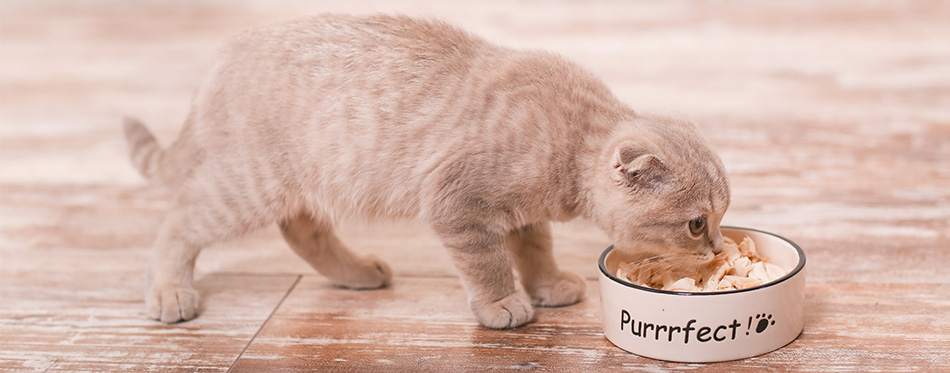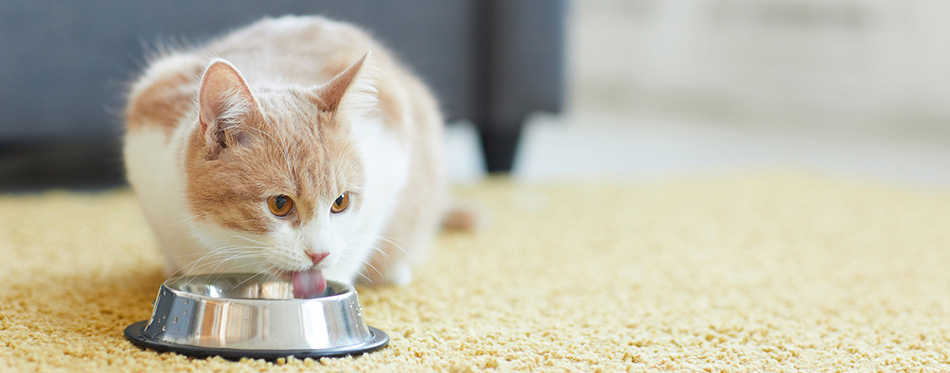Over the years, pet-lovers and veterinarians alike have noticed something peculiar about cats: they don’t care for sweets. Unlike their canine counterparts, who love to gobble down the sweet stuff given half a chance, picky cats will turn their noses up at even the fanciest sugary treats. For many years, this phenomenon was something of a mystery, but modern science has revealed the answer – and we’re here to share it with all you feline fanatics!

Different Taste Buds
The main reason that cats don’t care for sugar is pretty simple: they just can’t taste it. Despite their incredible sense of smell, which is 14 times more sensitive than a human’s, our feline friends are somewhat lacking in the taste department. Believe it or not, cats have just 470 taste buds on their tongues, compared to the 9,000 which humans have. Our taste buds are designed to detect five distinct flavor categories: sour, bitter, salty, umami (meaty/ high protein), and, of course, sweet.
Cats, on the other hand, lack the requisite taste buds for picking up sweet flavors. At the Monell Chemical Senses Center in Philadelphia, researchers have found that cats are missing a common mammalian gene, called Tas1r2, which builds the proteins required for sugars to be detected. Strangely, cats are the only mammal we know of that lacks this piece of sensory hardware.
Natural Preferences
So, why exactly don’t cats enjoy sweet foods like other mammals? Experts believe the reason is evolutionary.
Cats are part of the Carnivora family, and unlike other types of mammal, they’re strict meat eaters. This may explain why enjoying sugar hasn’t turned out to be necessary.
For herbivores and omnivores (including us), carbohydrates are an important dietary component. Sugary foods are especially rich in carbohydrates, making them a great source of energy for us plant-eaters. To encourage us to chow down on these rich foods, evolution has granted us the ability to detect and, crucially, enjoy sweet flavors. With this reward system in place, we’re motivated to seek out sugary foods, and so receive the energy required to survive.
Cats, on the other hand, need no such motivation. Their diet hinges on meat, not carbohydrates, so they have no need to seek out sweet flavors. Although cats’ taste buds are numerically limited, they’re a perfect fit for the job. They can detect fats very well indeed, as well as a chemical called adenosine triphosphate (ATP), the substance that powers every living cell. Despite our impressive tasting hardware, humans cannot taste this vital compound.
Cats are equally astute when detecting flavors they want to avoid. The feline pallet is very adverse to bitter and sour flavors, which helps cats to avoid poisonous or harmful substances. Many petcare companies have exploited this aversion with bitter-tasting sprays, designed to discourage cats from chewing and licking their wounds – or your furniture.

Scent and Flavor
Cats have around 70,000 odor receptors, which probably goes a long way towards compensating for their comparatively underequipped tongue. Your cat’s impressive nasal array also helps them to track down food – whether that’s prey in the wilderness, or meat in a cat food bowl.
Tastes and odors are detected by the same type of receptor: chemoreceptors, which is why the senses of smell and taste are so intimately tied.
In many animals, this connection between odor and flavor runs even deeper: dogs, cats, mice, horses, goats, lizards, and more, all have what’s called a Jacobson’s organ. This organ connects the mouth to the nasal passage, and can pick up odors in a sort of taste-smell hybrid. Cats use this organ by sucking air onto their tongue, before rubbing it on the roof of their mouth.
Because of their exceptional sniffing abilities, and their Jacobson’s organ, cat’s aren’t missing much with their limited array of taste buds.
Exceptions to the Rule
As any cat lover knows, these creatures can be tricky, so it should come as no surprise that finicky felines who love sweet foods do pop up now and again.
This could be happening for a number of reasons:
- Certain cats may enjoy the smell of sweet cat treats, and consume them for this alone
- The sweet food may contain elements your cat can detect any enjoy, such as salt, amino acids, or fat
- Cats can be quite fussy when it comes to texture, so it could be that certain felines enjoy the way that some sweet treats feel to eat
- Some cats may possess a minor genetic mutation, which allows them to taste sugar in very high concentrations
Cats and Food Appeal
If sweet foods don’t whet the feline appetite, what does?
Knowing what cats look for in their food can help owners to make a healthy diet as attractive as possible:
- Cats tend to prefer their food in larger chunks, and this goes for dry kibble too
- Soft foods are generally preferred over hard food
- Food is most appealing to cats when it’s at around 100 degrees Fahrenheit, which simulates the temperature of freshly killed prey
- Many cats show more interest in kibble when the shape is varied from week to week
Check out our guides on Wet Cat Food and Dry Cat Food for more info.

Conclusions
As we’ve seen, cats can’t taste sweets because they don’t need to. They’re carnivorous hunters, who haven’t evolved to consume carbohydrate-rich foods. This means they don’t need to taste and enjoy them. Despite their lack of sweet taste buds, cats can pick up on other flavors, especially fat, amino acids, bitterness, and sourness. These receptors, along with an impressive sense of smell, help cats track down prey, and naturally choose the food that’s best for them.
Unfortunately, many mainstream cat foods don’t take this into account, and bulk out their products with up to 20% carbohydrates. Some veterinary professionals believe that this tendency has triggered an uptick in cases of feline diabetes.

